IN THIS ISSUE of Charleston Currents #11.01 | Nov. 5, 2018
 FOCUS: Newsome pushes infrastructure investments for port’s growth
FOCUS: Newsome pushes infrastructure investments for port’s growth
COMMENTARY, Brack: Drop rhetorical frenzy and focus more on unity
IN THE SPOTLIGHT: SCIWAY
GOOD NEWS: New poll highlights S.C.’s pre-election mood, more
FEEDBACK: Send us your comments … share your thoughts
MYSTERY PHOTO: Flower power
S.C. ENCYCLOPEDIA: Soybeans
CALENDAR: Thursday event to look at state’s Turkish connection
Happy birthday to us! Today we mark the start of the 11th year of publication of Charleston Currents. We’ve thoroughly enjoyed bringing Good News to you for the last decade … Here’s to another: Lift a glass to us … after work today!
FOCUS: Newsome pushes infrastructure investments for port’s growth
Staff reports | S.C. Ports Authority (SCPA) President and CEO Jim Newsome last week told 600 customers and leaders outlined the organization’s successes and strategic infrastructure investments to continue growth during the annual State of the Port address at the Charleston Area Convention Center.
“We had a really good year in fiscal year 2018,” Newsome said. “We saw record cargo come through the Port, and we completed the Wando Welch Terminal refurbishment project. We worked together as a team towards a vision of being the preferred port of the top 10 U.S. Ports.”
The SCPA’s volumes for the 2018 fiscal year, which ran July 2017 through June 2018, were record-breaking, according to a press release. The port handled 2.2 million 20-foot equivalent container units (TEUs), an increase of 3 percent over the previous fiscal year. March through June marked the highest months of container volume in the port’s history. In breakbulk, or non-containerized cargo, Charleston handled 760,501 pier tons during FY 2018. Within the breakbulk business segment, SCPA moved 232,390 vehicles across the docks of the Columbus Street Terminal.
Approximately 22 percent of the port’s container cargo moves via intermodal rail including freight moving to Inland Port Greer which is 212 miles from Charleston in the upstate. The Greer facility achieved 117,812 rail moves in FY18. With the success of Inland Port Greer, SCPA opened Inland Port Dillon, in the northeastern part of the state, in April.
Key financial metrics include operating cash flow of $85 million and nearly $214 million in capital expenditures.
In addition to volume growth, SCPA achieved significant progress of key infrastructure projects in FY2018.
- The nearly three-year effort to strengthen and refurbish the Wando Welch Terminal wharf was completed in July, which allows the facility to handle three neo-Panamax ships at the same time.
- Construction on the Charleston Harbor Deepening Project to 52 feet, which began in February, is well underway with three Great Lakes Dock and Dredge Company dredges currently at work in the entrance channel to the harbor.
- The Hugh K. Leatherman Sr. Terminal also saw progress in FY18 with the completion of the fill phase.
- The SCPA Board also approved a $53.8 million contract for construction of the wharf structure for phase one of the facility, which has begun. The new terminal will open in 2021 to accommodate growth of the Port’s containerized cargo business.
In the future, the release said the port will continue to invest heavily to accommodate container volume growth and the efficient handling of big ships. East Coast ports have seen a continued increase in container volumes since the Panama Canal expansion. A nearly $400 million enhancement project is underway at the Wando Welch Terminal. Upon completion, the facility will offer 15 ship-to-shore (STS) cranes with 155 feet of lift height; 65 rubber-tired gantry (RTG) cranes; 25 empty handlers; 40 gates; a dedicated chassis yard; and optimized operations allowing for a 2.4 million TEUs capacity.
Construction on the Charleston Harbor Deepening Project continues to progress, marking a historic accomplishment that will make Charleston the deepest harbor on the East Coast. Newsome announced today that an updated benefit-cost-ratio (BCR) of 3.1 was completed by the U.S. Army Corps of Engineers, which meets the requirements for inclusion in the President’s Budget. The BCR recalculation took several factors into account, highlighting the fact that SCPA’s projected volumes out-performed the estimates used in the original study.
Vital to the Port’s ability to sustain the volumes and revenue required for such investments is the expansion of its cargo base. SCPA closed on the purchase of a nearly 1,000-acre industrial tract in Ridgeville, South Carolina to support import distribution and export growth. The rail-served site offers approximately 750 developable acres for port-related industry use.
Along with investments in the Port’s terminals are enhancements to intermodal efficiency. Newsome said as the Port grows, it must intelligently expand its reach by rail and improve the condition of the chassis fleet through the creation of the Southern States Chassis Pool (SSCP).
“We talk all the time about equipment and investments, but investments alone do not lead us to a winning outcome,” said Newsome. “The best people lead to the best outcomes, and through cooperation and collaboration we have worked together to build this port up. Our future is very bright and our best years are ahead.”
- Click to view Newsome’s State of the Port presentation.
- Have a comment? Send to: editor@charlestoncurrents.com
BRACK: Drop rhetorical frenzy and focus more on unity
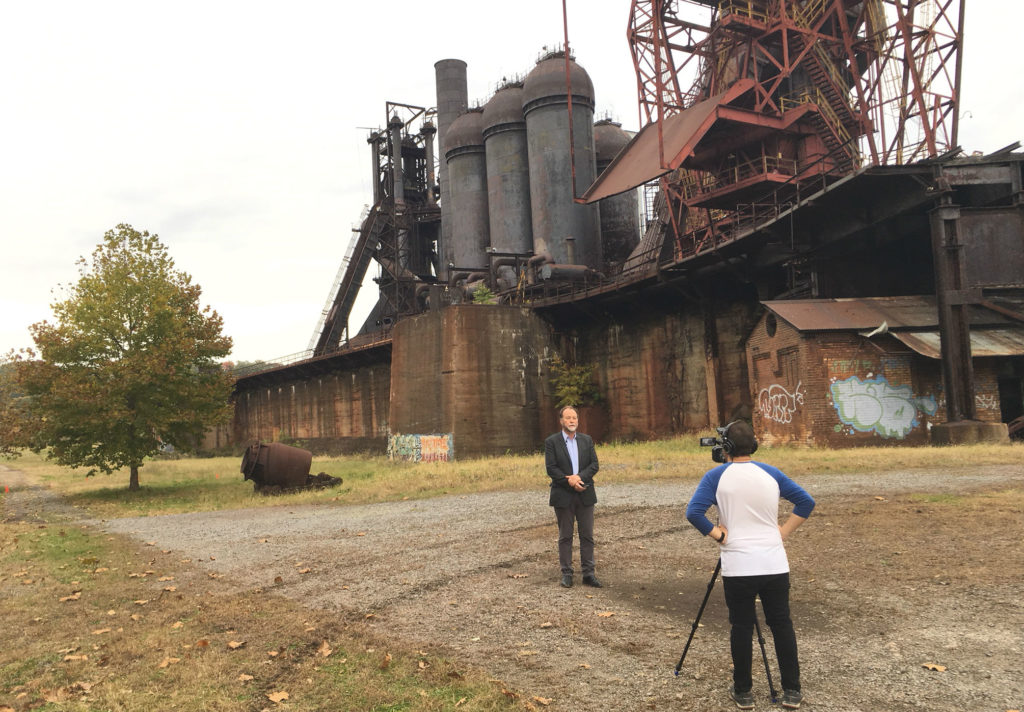
Australian political strategist Bruce Hawker stands in front of a shuttered blast furnace outside Pittsburgh, Pa.
By Andy Brack, editor and publisher The messages from a four-week tour across 10 states are loud and clear: The country is more divided than ever in modern history and the main issue in the midterm elections boils down to Donald Trump, which seems to be just the way he wants it.
 On the whole, Trump supporters want to give the president more of a chance to shake things up despite economic risks. Farmers in Minnesota, for example, are willing for short-term pain if there is long-term gain. They are worried they may not have buyers for crops being stored in silos now because of a trade war in China, but they want the president to have more time to work a deal.
On the whole, Trump supporters want to give the president more of a chance to shake things up despite economic risks. Farmers in Minnesota, for example, are willing for short-term pain if there is long-term gain. They are worried they may not have buyers for crops being stored in silos now because of a trade war in China, but they want the president to have more time to work a deal.
Meanwhile, Trump critics want to give the president a new Congress to put a check on him and his twitching twittering. And they’re energized more than ever to get out and vote in the midterm elections.
Here are several lessons learned in the listening trip across the country that will be used in a documentary called A Hard Road: Travels in Trump’s America:
Tone it down. The fiery rhetoric coming from Trump and Congress isn’t doing much to bring the country together, which is what the scores of people we talked with want. But it’s not only Trump’s shoot-from-the-hip tirades on Twitter, campaign speeches or impromptu interviews. It’s also all of the negative ads from all candidates and the nasty media retorts by Trump critics. Fanning the flames, too, are media that spread the viciousness of Republicans and Democrats. Voters want everyone to tone it down, even though that seems to be more daunting than past attempts at nuclear disarmament talks.
Find more unity. Perhaps one way to get things toned down is for leaders to work on issues where they really aren’t that far apart. There are bipartisan issues that offer paths to building trust and progress, such as ways for legal immigration to continue while protecting borders; investing in infrastructure to rebuild roads and blighted communities; and finding reasonable spending cuts to put a tourniquet on the nation’s bad habit of borrowing money.
Listen more. Leaders on both sides need to listen more to people throughout the country, not just consume media that supports their ideological bent. Many Trump supporters believe what the president is doing is responding to frustrations that have not been heard by leaders in years. While Trump may just be using their frustrations for political gain, his supporters believe he is listening — and that’s fueling his power. If more people listened, more would get done.
Media responsibility. We’re not a believer in so-called fake news. That phenomenon is nothing but people not accepting facts because they don’t like them. But a lot of what passes on cable news these days is more opinion than actual news. It’s infotainment offered to generate bigger ratings and more money for networks. Just as we want leaders to tone down their rhetorical spasms, the media need to report news and get rid of commentators who purportedly add context but really are spewing little more than partisan talking points. Side note: Maybe the media can stop bursting into a hyper-frenzy on every Trump tweet. This magnifies the impact. Why not start ignoring them?
It’s the economy. In Trump’s favor now — and probably why people are willing to cut him some slack — is the fact that the economy is rolling along and unemployment is low. If his gamble with higher tariffs doesn’t pay off, the political playing field could change quickly and Trump may find it harder to keep supporters, particularly when they wake up and realize all of the manufacturing jobs lost in the U.S. aren’t coming back because of technological innovation and automation. One historian, for example, told us it takes 10 percent of the manpower today to make the same amount of steel that it did in Pittsburgh’s heyday when tens of thousands of workers made half of the world’s supply. Today, the Pittsburgh area has just two working steel plants.
Trump has added a new, vitriolic layer to the American experiment with democracy. If Democrats win control of the House, they’d be well-advised to work on a unity agenda, not constantly do battle with the president.
- Have a comment? Send to: editor@charlestoncurrents.com
SPOTLIGHT: SCIWAY
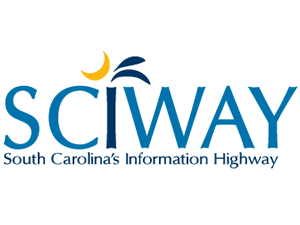 The public spiritedness of our underwriters allows us to bring Charleston Currents to you at no cost. Today we shine our spotlight on SCIWAY. Pronounced “sky-way,” SCIWAY is South Carolina’s Information Superhighway — the largest and most comprehensive directory of South Carolina information on the Internet. It includes thousands of links to other South Carolina Web sites, including Charleston Currents, as well as an amazing collection of maps, charts, articles, photos and other resources.
The public spiritedness of our underwriters allows us to bring Charleston Currents to you at no cost. Today we shine our spotlight on SCIWAY. Pronounced “sky-way,” SCIWAY is South Carolina’s Information Superhighway — the largest and most comprehensive directory of South Carolina information on the Internet. It includes thousands of links to other South Carolina Web sites, including Charleston Currents, as well as an amazing collection of maps, charts, articles, photos and other resources.
- To learn more about this extraordinary information hub that 7 million people visit a year, go to: http://www.SCIWAY.com.
- To meet all of our underwriters,click here.
GOOD NEWS: New poll highlights S.C.’s pre-election mood, more
By Lindsay Street, Statehouse Report | A slight majority of respondents think the country is headed in the wrong direction, but that South Carolina is on the right track, according to a Winthrop Poll released this week.
A poll of S.C. residents (not likely voters, there’s a difference) by Winthrop University found the most important problems facing the country are immigration, followed by racism, and politicians or government. Those surveyed said the most important issues facing the Palmetto State were, issues that keep cropping up: education, infrastructure, and jobs or unemployment.
 While the poll did not select for likely voters, it did ask respondents whether they approved of S.C. Gov. Henry McMaster. Respondents have increased their favorability rating for the incumbent Republican to 51 percent. McMaster is facing Democratic nominee S.C. Rep. James Smith in the Nov. 6 election.
While the poll did not select for likely voters, it did ask respondents whether they approved of S.C. Gov. Henry McMaster. Respondents have increased their favorability rating for the incumbent Republican to 51 percent. McMaster is facing Democratic nominee S.C. Rep. James Smith in the Nov. 6 election.
As of end of October, Smith was still lagging behind McMaster in public and private polls, according to The Post and Courier. In a reliably red state, Smith has also had trouble getting name recognition among voters, according to media reports.
State lawmakers, like Smith, received a 46 percent approval rating from respondents.
Here are other findings from the October poll:
- #MeToo: Nearly half of poll respondents strongly disagreed that women who claim to be sexually harassed cause more problems than they solve, and nearly two out of three respondents strongly disagreed that sexual harassment in the workplace is no longer a problem in the United States. While nearly three-fourths strongly or somewhat agreed that most women who come forward about sexual harassment are telling the truth, nearly 80 percent said that innocent men have to be extra careful to be not accused of sexual harassment.
- Economy: About three-fourths of South Carolina respondents said the country’s economy is very good or fairly good, while the same number of respondents think the condition of the state’s economy is either very or fairly good. A large majority described their own financial situation as good or excellent and getting better.
- Climate change: Nearly half of respondents said climate change is happening and the cause is equally shared by humans and nature. About 30 percent said humans were the primary cause.
- Congress: 69 percent of respondents disapproved of Congress, but U.S. Sen. Lindsey Graham, R-South Carolina, received favorable ratings from Republican-leaning respondents.
- Kavanaugh: Half of respondents said they approve of U.S. Supreme Court Justice Brett Kavanaugh’s nomination and confirmation. The poll found that Kavanaugh supporters were less likely to agree that most women who report harassment are telling the truth, and more likely to agree that men must be careful to avoid false accusations.
- Trump: While President Donald Trump has a 44 percent approval rating in the Palmetto State, 83 percent of Republicans approve of the president.
Also in Good News:
Bigger airport cell phone lot. Charleston International Airport has doubled the size of its cell phone waiting lot from 40 to 80 parking spaces and includes new lighting and parking for handicap drivers, according to airport officials. The airport also is on track to begin construction in early 2019 on a new, five-story parking structure that will increase airport parking deck capacity by 3,000 spaces. The existing parking deck was built in 2005 and houses 1,268 parking spaces. Learn more about current construction at www.iflyCHS.com/RoadwaytoRunway.
CofC exhibit to focus on women. Throughout the 2018-19 academic year, the College of Charleston marks the Year of Women, a centennial commemoration of the first admission of female students to the College. Through special events, exhibits and campus-wide programming, the Year of Women will illustrate the depth and breadth of women-powered milestones, which were frequently achieved with the challenges of navigating new cultural terrain. Among the highlights of the Year of Women programming is a two-part exhibit, curated by the Office of Alumni Affairs, that showcases photographs, documents and paraphernalia connected with noteworthy CofC women and events spanning the past 100 years. The exhibit is on display Monday through Friday from 9 a.m. to 4 p.m. on the 2nd Floor of Towell Library, located off Cistern Yard on the College of Charleston campus. The first part of the exhibit titled, “The First Fifty Years of Women at the College of Charleston,” encompasses 1918 through 1968. It is currently on view and will continue through Feb. 14, 2019. To find out more about the Year of Women program, visit yearofwomen.cofc.edu.
Send us your thoughts or what you love
We’d love to get your impact in one or more ways:
Send us a letter: We love hearing from readers. Comments are limited to 250 words or less. Please include your name and contact information. Send your letters to: editor@charlestoncurrents.com. | Read our feedback policy.
Tell us what you love about the Lowcountry. Send a short comment – 100 words to 150 words – that describes something you really enjoy about the Lowcountry. It can be big or small. It can be a place, a thing or something you see. It might the bakery where you get a morning croissant or a business or government entity doing a good job. We’ll highlight your entry in a coming issue of Charleston Currents. We look forward to hearing from you.
MYSTERY PHOTO: Flower power
Here’s a clue on this week’s mystery: It’s not in South Carolina, but doesn’t it look familiar? What and where is it? Send your guess to: editor@charlestoncurrents.com. And don’t forget to include your name and the town in which you live.
Our previous Mystery Photo
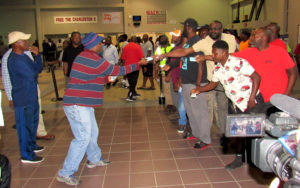 Our Oct. 29 mystery, “One tough mystery,” proved to be a little tough to all but three eagle-eyed readers. It showed a hiring at the International Longshoremen’s Association union hall in Charleston.
Our Oct. 29 mystery, “One tough mystery,” proved to be a little tough to all but three eagle-eyed readers. It showed a hiring at the International Longshoremen’s Association union hall in Charleston.
A big tip of the hat to Stephen Yetman of Charleston, who was the only reader to explain that the photo was a hiring call. Hats off also to Montez Martin of Charleston and George Graf of Palmyra, Va., both of whom identified the hall.
Graf provided a little context: “The International Longshoremen’s Association, or ILA, is an historical and powerful black union in a state where other unions struggle to even exist. Local 1422 is in Charleston’s port. All jobs for unloading all of the shipping containers in the port of Charleston come through the union hall first, so union members arrive at the hiring hall to get work for the day, which is distributed in a chaotic way based on seniority.”
Send us a mystery: If you have a photo that you believe will stump readers, send it along (but make sure to tell us what it is because it may stump us too!) Send it along to editor@charlestoncurrents.com.
HISTORY: Soybeans
S.C. Encyclopedia | An important cash crop widely grown in South Carolina, soybeans were first cultivated as a soil builder and animal fodder. Farmers simply broadcast the seeds and turned livestock into the fields to forage. In the early twentieth century, however, the famed agricultural scientist George Washington Carver discovered the high oil and protein content of soybeans and thus the crop’s greater market value. Recognizing the crop’s potential to free the state’s farmers from “King Cotton,” the agriculturalist John Edward Wannamaker worked to develop soybean varieties that would thrive in South Carolina.
Soybeans became a cash crop in South Carolina in the late 1940s. Farmers liked the crop’s low fertilizer requirements, soil-building character, and market strength. Moreover, soybeans are a good rotational crop and thus a good fit in both cotton and tobacco cultures. Beans could be planted in spring or early summer and harvested from October to December. The advent of reliable harvesting combines hastened the spread of soybean culture. As the crop could be planted, cultivated, and harvested entirely by machine, labor requirements were few. Low production costs coupled with increasing demand for a broad range of soy products afforded dependable profits for growers. By the early 1960s soybeans were an important part of the state’s agricultural economy. In some areas soybean acreage superseded cotton acreage.
South Carolina soybean production peaked in 1982 at 1.8 million acres. But rising costs of fuel, fertilizer, and equipment squeezed soy profits, while competing culture areas in the Midwest softened demand. Added to these trends was the declining real value of soybeans. In 2000 soybeans sold for about half their 1982 inflation-adjusted price. By the end of the twentieth century South Carolina soybean production had fallen to about 450,000 acres worth about $48 million to growers and ranked tenth in cash value to South Carolina farmers.
— Excerpted from an entry by Eldred E. Prince Jr. This entry hasn’t been updated since 2006. To read more about this or 2,000 other entries about South Carolina, check out The South Carolina Encyclopedia, published in 2006 by USC Press. (Information used by permission.)
CALENDAR: Thursday event to look at state’s Turkish connection
Staff reports | Join the the Friends of the College of Charleston Libraries on Nov. 8 to explore the story of misunderstood immigrants and their struggle to gain recognition and acceptance in the rural American South.
![]() In the book, South Carolina’s Turkish People, scholars Terri Ann Ognibene and former Alabama Congressman Glen Browder reveal the never-told but true story of how a dark-skinned community endured nearly two centuries of isolation, segregation, discrimination, and oppression.
In the book, South Carolina’s Turkish People, scholars Terri Ann Ognibene and former Alabama Congressman Glen Browder reveal the never-told but true story of how a dark-skinned community endured nearly two centuries of isolation, segregation, discrimination, and oppression.
This story is important not only for the belated recognition and dignity of that community but also as a compelling addition to our understanding of the American experience.
- Date: Thursday, Nov. 8, 2018, 6 p.m. to 7:30 p.m.
- Location: Addlestone Library Rm. 227 (Second floor, northwest corner)
- Tickets: FREE and open to the public. Registration is required.
- Copies of South Carolina’s Turkish People will be available for purchase and signing at the event.
- Q&A will follow the discussion.
Also on the calendar:
Holiday Festival of Lights. The Holiday Festival of Lights returns to James Island County Park starting Nov. 9 for its 29th year This spectacular light show is one of Charleston’s most beloved holiday events, featuring an estimated two million shimmering lights. The Holiday Festival of Lights is open every evening, through Jan. 1, 2019 at 5:30 p.m. nightly and closes at 10 p.m. Sunday through Thursday and 11 p.m. Friday and Saturday. More info: www.HolidayFestivalofLights.com
C4WNEW: Nov. 15-16, Trident Technical College, North Charleston. This event, the Center for Women’s annual conference, will feature author Elizabeth Gilbert as special guest. To learn more or buy tickets, click here.
THAT Holiday Book Sale. Looking for some extra stocking stuffers this Christmas? Shopping for Kwanzaa or a New Year’s Party? Come shop the Charleston Friends of the Library Holiday Book Sale, and support your local library system for the holidays. That Holiday Book Sale is set for Nov. 30 to Dec. 1 at the Mount Pleasant Regional Library, 1133 Mathis Ferry Road in Mount Pleasant. Learn more: CharlestonLibraryFriends.org
Early morning bird walks at Caw Caw: 8:30 a.m. every Wednesday and Saturday, Caw Caw Interpretive Center, Ravenel. You can learn about habitats and birds, butterflies and other organisms in this two-hour session. Registration not required, but participants are to be 15 and up. $10 per person or free to Gold Pass holders. More: http://www.CharlestonCountyParks.com.
AREA FARMERS MARKETS
SATURDAYS: The Charleston Farmers Market, is back in action from 8 a.m. to 2 p.m. every Saturday through Nov. 24 at Marion Square. A holiday market will be open Dec. 1, 2, 8. 9, 15 and 16.
SATURDAYS: Johns Island Farmers Market operates each Saturday from 9:30 a.m. to 1:30 p.m. year-round with more than 50 local farmers and vendors, food trucks, music and more. The market is located on the campus of Charleston Collegiate School, 2024 Academy Road, Johns Island.
SATURDAYS: The Town Market on James Island is closed for the season, but a holiday market is set for Dec. 7. Click the link for details. Location: James Island Youth Soccer Club, 871 Fort Johnson Road, James Island.
WEDNESDAYS. The West Ashley Farmers Market, 55 Sycamore Ave., is open every Wednesday from 3 p.m. to 7 p.m. in Ackerman Park.
- If you have an event to list on our calendar, please send it to feedback@charlestoncurrents.com for consideration. The calendar is updated weekly on Mondays.
If you like what you’ve been reading, how about considering a contribution so that we can continue to providing you with good news about Charleston and the Lowcountry. Interested? Just click the image below.
https://charlestoncurrents.com/donate/
OUR UNDERWRITERS
Charleston Currents is an underwriter-supported weekly online journal of good news about the Charleston area and Lowcountry of South Carolina.
- Meet our underwriters
- To learn more about how your organization or business can benefit, click here to contact us. Or give us a holler on the phone at: 843.670.3996.
OUR TEAM
Charleston Currents offers insightful community comment and good news on events each week. It cuts through the information clutter to offer the best of what’s happening locally.
- Mailing address: P.O. Box. 22261 | Charleston, SC 29413
- Phone: 843.670.3996
Charleston Currents is provided to you weekly by:
- Editor and publisher: Andy Brack, 843.670.3996
- Contributing photographer: Michael Kaynard
- Contributing editor, common good, Fred Palm
- Contributing editor, money: Kyra Morris
- Contributing editor, Palmetto Poem: Marjory Wentworth
SUBSCRIBE FOR FREE
Subscriptions to Charleston Currents are free.
- Click here to subscribe.
- Unsubscribe. We don’t want to lose you as a reader of Charleston Currents, but if you must unsubscribe, you will have to do it through the email edition you receive. Just go to the bottom of any of your weekly newsletters and click the “unsubscribe” function. If that doesn’t work, please send us an email with the word “unsubscribe” in the subject line.
© 2008-2018, Statehouse Report, LLC. All rights reserved. Charleston Currents is published every Monday by Statehouse Report LLC, PO Box 22261, Charleston, SC 29413.


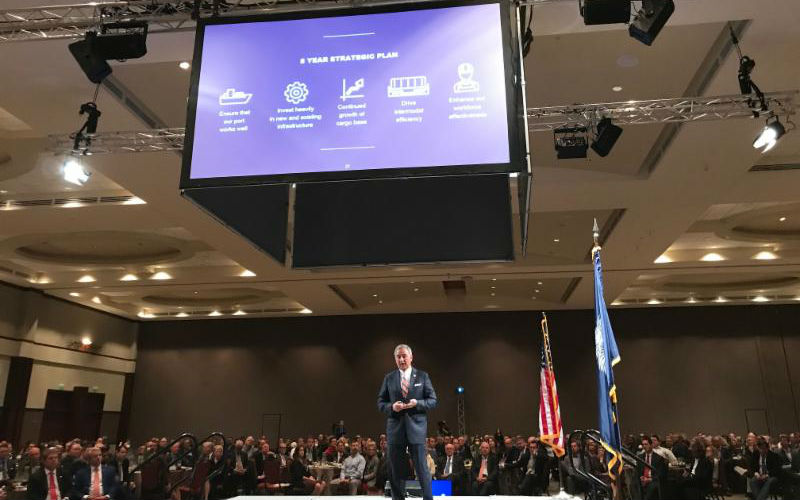
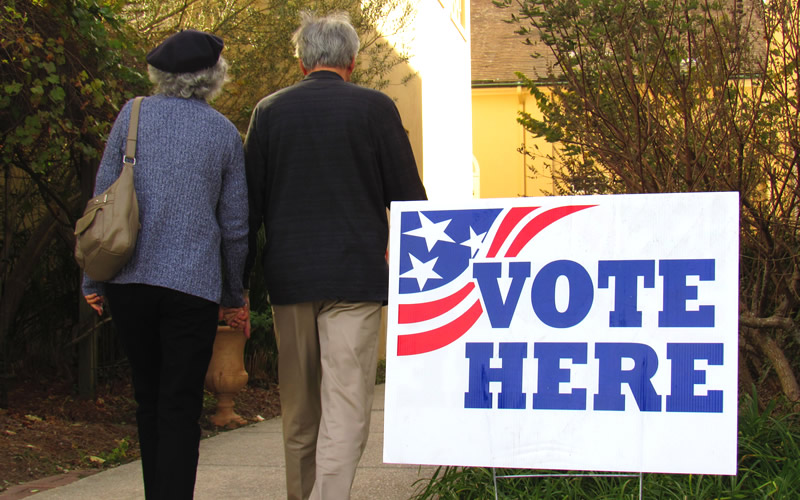

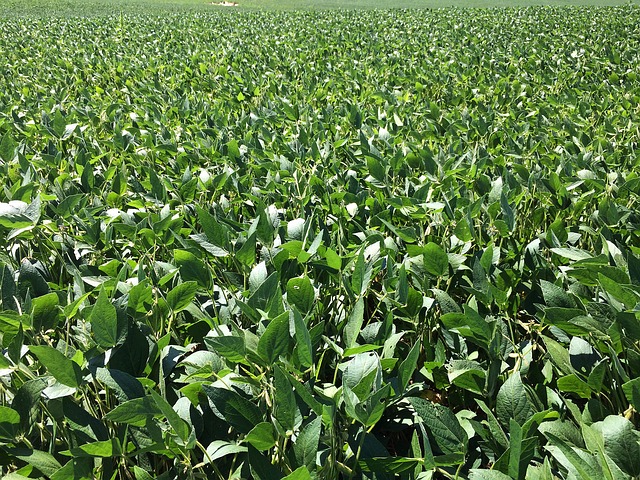

 We Can Do Better, South Carolina!
We Can Do Better, South Carolina!
























